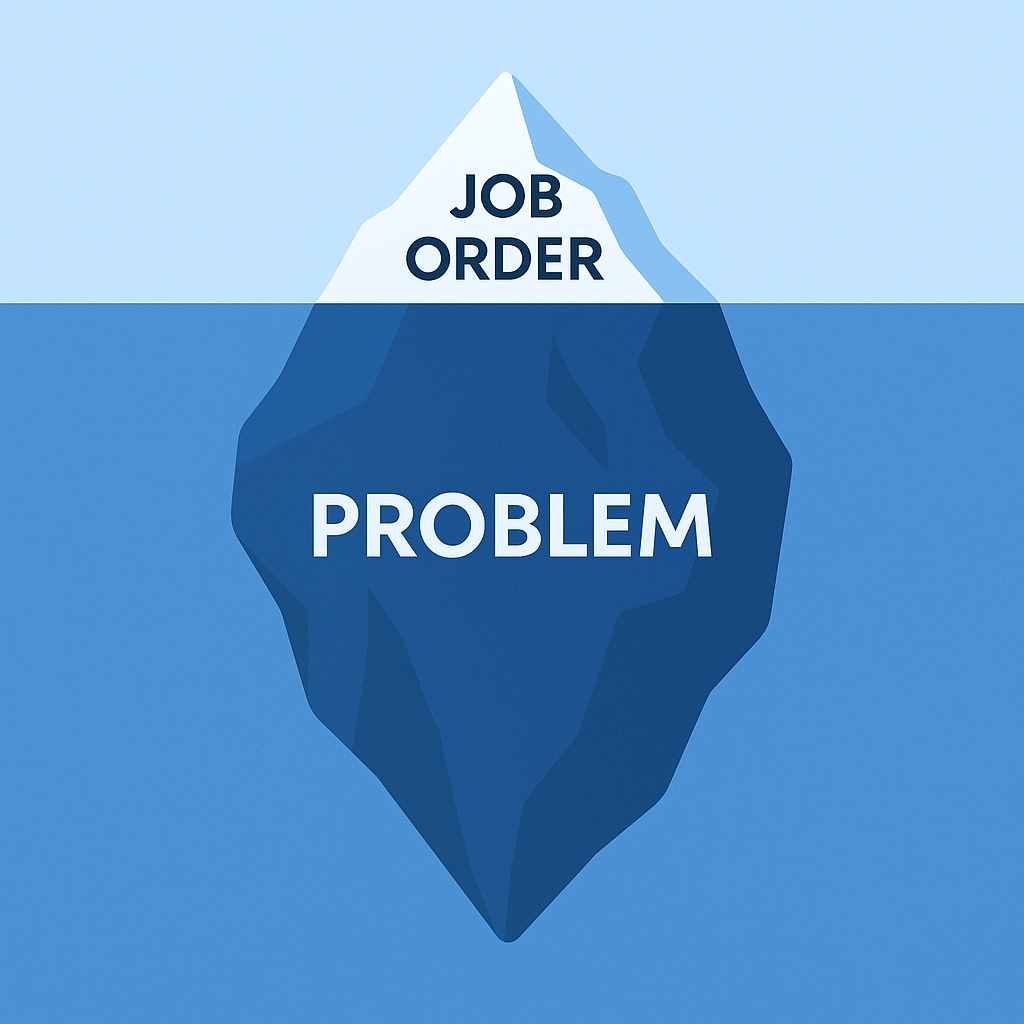Selling With Your Consultant
In my previous post, How to Prevent Unexpected Contract Terminations, I shared how systemizing consultant and client check-ins at key milestones...
7 min read
![]() Dan Fisher
:
Dec 6, 2018 7:33:58 AM
Dan Fisher
:
Dec 6, 2018 7:33:58 AM

Charisma and being an extrovert can be advantageous in sales. In fact, many people attribute sales success to personality traits rather than to skills that can be coached or taught. Despite that, corporate America alone spends more than $20 billion annually to train salespeople on products, services, sales skills and behaviors, all of which demonstrates the widespread belief that you can develop great salespeople and great sales teams.
train salespeople on products, services, sales skills and behaviors, all of which demonstrates the widespread belief that you can develop great salespeople and great sales teams.
Most staffing sales leaders would agree that salespeople who possess a certain "DNA" or specific personality traits, such as drive, empathy, and curiosity, are more likely to be successful.
But there’s a HUGE difference between individual sales success and team success across the entire sales force. While there may be some debate as to whether or not great salespeople are born or made, make no mistake, a great salesforce is developed by great sales leaders. The mission for all sales leaders is to achieve repeatable, sustainable, scalable and predictable revenue growth. That is the trademark of a great salesforce and it's leader.
Anyone can win the lottery by having one or two key performers who achieve great individual success but the difference between individual sales success and team success is MASSIVE.
In this post I'm going to share with you the sales leaders guide to building a scalable sales organization, six steps to building a scalable sales organization predictable revenue.
Scalable Sales Organization, Predictable Revenue
You can't grow a company if you can't scale your sales organization. When you look at the staffing industry there are literally thousands of companies in the $10-$75M revenue range. The majority of these companies are living off the 'superhero' model which means they're getting 80% to 90% or more of their revenue from just one or two of their top producers. Unfortunately this model doesn't scale and inevitably these companies stop growing because they don't have a systematic process and "playbook" for ALL salespeople to achieve the same "rock star" success. Having a scalable sales organization means SALES LEADERS:
Aaron Ross transformed the sales team at Salesforce.com and scaled the business into a cash cow. Fundamentally, predictable revenue refers to following a systematic framework to achieve consistent, year-over-year revenue growth based on a formulaic process - not last-minute negotiations and guessing. Having a systematic process to follow is what makes revenue growth "predictable." This of course means taking the right approach to sales training and building a scalable and repeatable onboarding program that delivers predictable results. Ross goes on to explain in his book that to achieve predictable revenue, one must understand their sales funnel, determine their average deal size (to not chase bad deals) and understand the length of their average sales cycle. He also points out that everything you do must become a system. Without a system you have nothing to scale and therefore have no predictability.
Now that we have a basic understanding and framework for what it means to have a scalable sales organization that produces predictable revenue, let's turn our attention to the role the sales leader plays in building this sales organization.
Sales Strategy
The first ingredient to building a scalable sales organization is defining your sales strategy, which specifies who your salespeople should sell to, what products and services they should offer, and what sales process and sales methodology they should use (i.e. what sales activities should they complete to ensure they stay in alignment with their customer throughout the buying process including the use of verifiable outcomes). Without a company-defined sales strategy, sales process and sales methodology, your sales people will revert to the "path of least resistance" and do whatever is easiest and what they are most comfortable with. In short, they won't do what is most effective. Even the best salespeople need a strategy around target market, buyer personas, products and services and a defined role, along with a sales process and sales methodology to align selling efforts with the buyer's journey and their goals and objectives.
Talent Acquisition
Sourcing, screening and on-boarding the same type of sales people consistently is the next step to building a scalable sales organization. But talent alone is not enough. Most staffing companies tend to hire off of “gut feeling.” Even if you've had success with hiring off of "gut feeling" (which I doubt anyone has) there’s still no way of replicating it on a larger scale or quantifying it. Instead, staffing firms should develop their own hiring criteria. Specifically, they can create a job model that defines the behaviors required to be successful in a given role. For example, you can create a job model for each of the different roles in your company such as recruiter, account manager and business development representative. Each job model will have it's own unique set of behaviors that are key to success. Once the behaviors are defined you can assign a weighted value to each. The point of all of this is that you apply quantitative data analysis to your hiring process to improve your hiring success and avoid making bad hires. This is a scalable solution, hiring off of gut instinct is not. Once you have a large enough data set you can run regression analysis to correlate the interview assessments with sales success. This will allow you to fine tune your weighted values associated with each behavior to make the right hires more frequently and consistently. By consistently relying on the data and focusing on hiring for behavioral traits you can begin to consistently and effectively hire great sales people at scale and in mass. You'll never scale your sales organization if only 2 out of 10 new hires achieve "success."
Organizational Structure
Another key to building a scalable sales organization is defining clear roles and responsibilities for each sales function such as inside vs. outside sales or business development representative vs. account manager. Without clearly defined roles and responsibilities team members become vulnerable to making assumptions and confusion ensues. Revenue targets are missed. Different tasks and responsibilities are going to be more suited for one role vs. another and need to be defined and communicated. Poor organizational structure and deployment of the sales force may also result in under served territories or accounts and missed or lost opportunities. On the other hand, having the right go-to market strategy including the right size sales force for your total addressable market is key. Too small of a sales force leads to insufficient territory and account penetration. As I wrote in my blog, developing your go-to-market strategy, as you design your organizational structure you will want to make sure you carefully account for the proper balance between scale and bandwidth with growth rate goals.
Consistent Sales On-boarding, Training
When I ask salespeople how they were trained in their current or previous job, most respond by saying they shadowed a top performer. When I ask salespeople from within the same company how they were trained I often hear different answers. Both of these responses are concerning. Even top performers have weaknesses, so for those who prescribe to shadow training, how do new hires learn how to execute the part of the sales process that is the top performer's weakness? No one single salesperson can train salespeople on the entire sales process. And for those who are trained differently and/or by different people from within the same organization, how do you scale that process? How do you ensure Dan, who was trained by Bob, learns what John learned who was trained by Sarah? How does that scale?
This may sound cold or heartless but a good indicator of a company's ability to grow indefinitely is how independent it is of any one individual. In short, the ability to scale is tied to the de-emphasis of one, single individual. To build a great sales force in which the sales organization scales means to train all salespeople the exact same way. To follow the same steps of the sales process and follow a consistent sales methodology. Naturally, your front line sales managers must play an active role coaching and developing team members during their training and onboarding and continue to reinforce those skills and behaviors to ensure lasting change and results. To learn more about role of the sales leader in employee training, learning and development, check out our webinar on January 8, 2019:
Consistent Sales Execution
You can have the best sales strategy, organizational structure, training program and talent acquisition plan, but if you fail to consistently execute than it's all for nothing. To tie all of this together sales leaders need to lead by consistently modeling the desired behaviors and provide consistent sales coaching. Specifically, sales leaders need to coach sales people to follow the sales process and execute the sales methodology. Rather than relying solely on the individuality of the sales person including their personality and how they're comfortable selling, top sales leaders know that to scale the business they must coach to the process. The reason for this is simple: Superstars are very hard to find. While there is an art to selling, selling at mass scale is a science.
Sales Enablement Support
Today’s sales manager is expected to be part sales superstar who still carries a bag including their own persona quota, part trainer, part CRM/ATS expert, and most likely parts of a half-dozen other roles. Suffice it to say, the role of today’s sales manager is diverse and complex.
For sustained success, great sales forces are made by possessing a capable sales enablement team that provides the sales organization with the tools, technology, processes, methodologies and training that help salespeople sell more effectively. Today's sales manager simply does not have the time to do all of these things. The role of sales enablement is to provide sales people with what they need in order to consistently engage customers and candidates in productive conversations at each stage of the sales process. While other departments such as manufacturing and finance have been overhauled and optimized with standards and methodologies like Total Quality Management or Six Sigma, sales has somehow evaded the management rigor, standards and disciplines that it’s peer groups have adopted. Is it reasonable to expect a chemical manufacturer to scale their business without TQM? Why should we expect to scale the sales organization without sales enablement? Without a good sales enablement system, organizations are prone to suffer from lack of discipline in sales operations which leads missed revenue targets and high turnover.
Executing in each of these areas is no easy task. To learn more about how to build a scalable sales organization including the role of the sales leader in employee training, learning and development, check out our webinar on January 8th, Be the Catalyst for Change, Understanding Your Role as the Sales Leader in Employee Training and Sales Enablement.
For more sales onboarding tips, read our step-by-step guide to making successful sales onboarding repeatable and predictable.

In my previous post, How to Prevent Unexpected Contract Terminations, I shared how systemizing consultant and client check-ins at key milestones...

About a year ago, I was serving as the fractional revenue leader, managing sales and recruiting for a client.

If you’ve worked in staffing long enough, you’ve been trained to chase job orders.